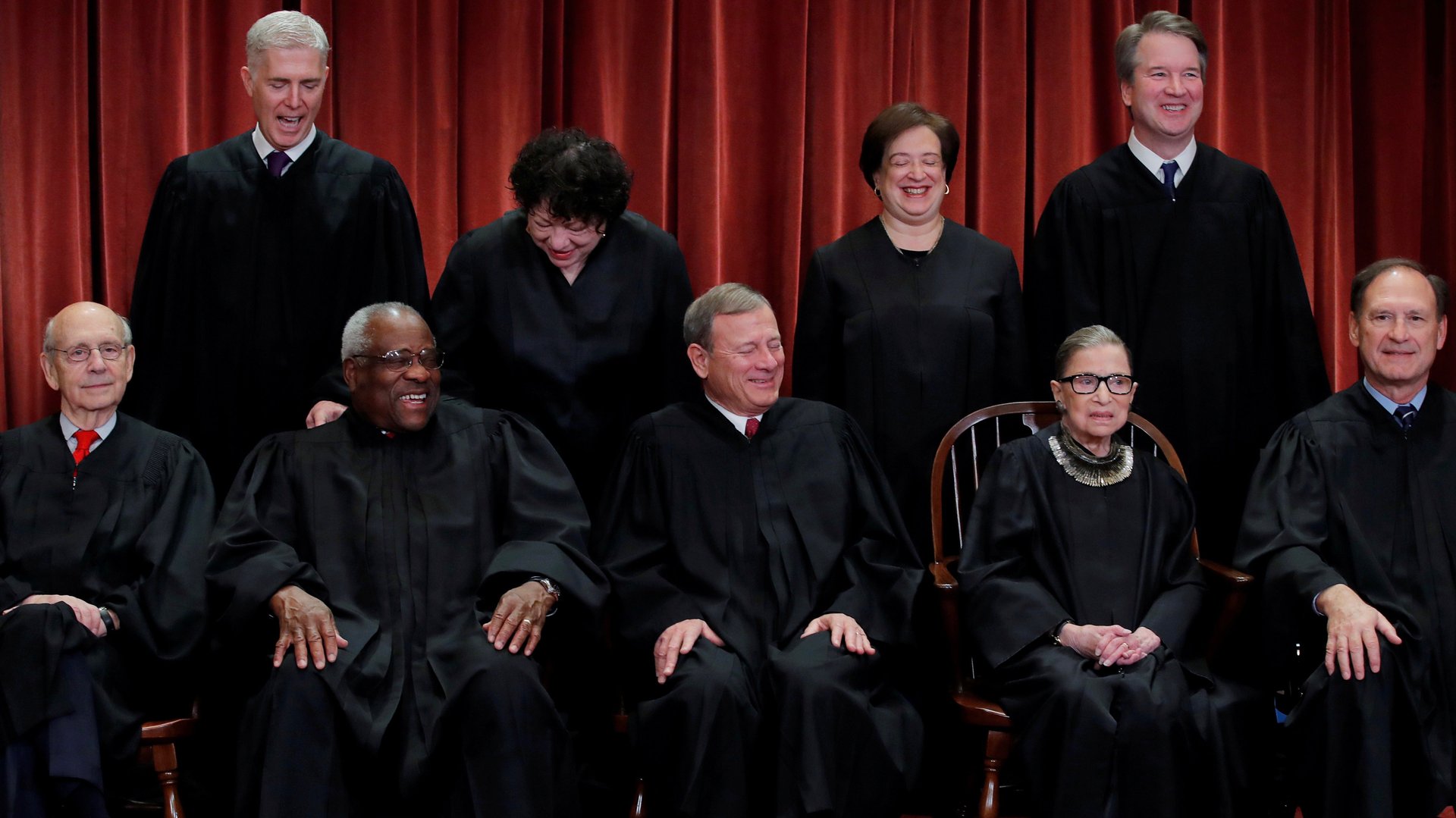John Roberts may be the new swing vote on the US Supreme Court
When US Supreme Court justice Anthony Kennedy announced his retirement in June, liberals were dismayed. Kennedy was appointed by a Republican president, Ronald Reagan, but during his tenure on the court he became known as “the swing vote,” a justice who might side with his more liberal colleagues on certain issues.


When US Supreme Court justice Anthony Kennedy announced his retirement in June, liberals were dismayed. Kennedy was appointed by a Republican president, Ronald Reagan, but during his tenure on the court he became known as “the swing vote,” a justice who might side with his more liberal colleagues on certain issues.
Since then, some have posited (paywall) that chief justice John Roberts—appointed by George W. Bush in 2005—might now occupy that position. On Dec. 21, he provided some evidence of this, voting against a stay on a lower court ruling finding Donald Trump’s newly imposed limitations on immigrants seeking asylum illegal. Roberts sided with the more liberal justices—Elena Kagan, Ruth Bader Ginsburg, Sonia Sotomayor, and Stephen Breyer. Meanwhile, the conservative wing—the two Trump appointees, Neil Gorsuch and Brett Kavanaugh, along with Clarence Thomas and Samuel Alito—would have granted the Trump administration’s request to stay the order.
With this move, Roberts proved a point he’s been trying to make of late, which is that the court is neither conservative nor liberal, and that it is the apolitical branch of government. And he confirmed the predictions of court observers, like Buzzfeed News legal editor Chris Geidner, that he’ll be the bridge between divided ideologues on the bench.
After the contentious confirmation hearing for Kavanaugh, Trump’s nominee to replace Kennedy, Roberts has been fighting a perception that the court is just another arm of the executive branch, willing to do the bidding of the president. The chief justice is attempting to ensure the legitimacy of the institution he heads.
Roberts last month aimed a veiled criticism at Trump after the president tweeted angrily about an “Obama judge.” Uncharacteristically, the chief justice joined the political fray, if only to say that this isn’t how judges operate, telling the Associated Press, “We do not have Obama judges or Trump judges, Bush judges or Clinton judges. What we have is an extraordinary group of dedicated judges doing their level best to do equal right to those appearing before them.”
Conservatives aren’t thrilled with Roberts taking the middle path. Earlier this month, Thomas wrote an angry dissent after Roberts joined the liberals in deciding to deny review of two cases (paywall) involving Planned Parenthood. Thomas contended that the cases were not about abortion but about who can sue when a state withdraws funding to the women’s heath group, writing, “Resolving the question presented here would not even affect Planned Parenthood’s ability to challenge the states’ decisions; it concerns only the rights of individual Medicaid patients to bring their own suits.” The conservative justice concluded that the court was refusing to do “its job” for ideological reasons.
Roberts may see his job differently from Thomas now, however, given the stark politicization of the judiciary. He won’t be the first justice to shift his ideological position vis-a-vis the bench—Sandra Day O’Connor was a conservative justice who became more liberal on the bench, as did Kennedy. And though a 2015 study (paywall) in the Journal of Legal Studies on the “ideology rankings” of justices found that Roberts was “reliably conservative,” aligning with the right 58% of the time, he also appears intent on taking a measured approach now.
With Trump so vocal about his view that the judiciary is an ideological body—he tweeted a rebuke of Roberts in November, telling him to “study” the cases that show there is such a thing as “Obama judges”—Roberts is attempting to present a different picture (paywall). In a speech in October at the University of Minnesota, Roberts explained how he sees the court: “We do not sit on opposite sides of an aisle. We do not caucus in separate rooms. We do not serve one party or one interest. We serve one nation.”